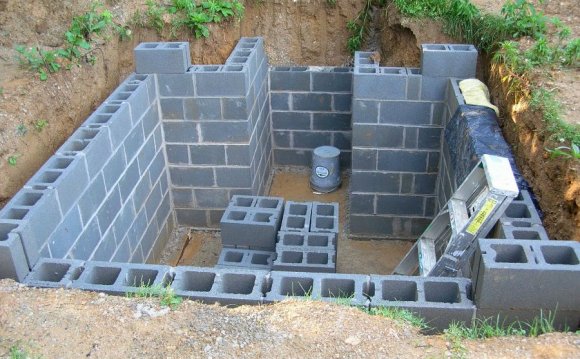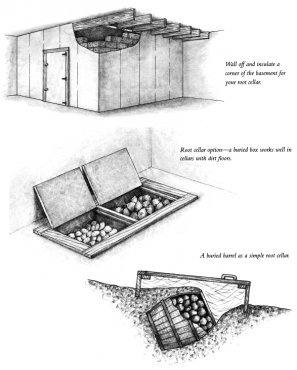
 As we ease our way into autumn, make sure you are ready to preserve your root vegetable harvest in a soundly constructed, home storage system. In the following excerpt from Eliot Coleman shares his expertise on building a successful root cellar.
As we ease our way into autumn, make sure you are ready to preserve your root vegetable harvest in a soundly constructed, home storage system. In the following excerpt from Eliot Coleman shares his expertise on building a successful root cellar.
For more step-by-step projects to jumpstart your season extension plans and properly prepare your plantings for next spring, check out these links:
The Endless Arugula Bed
The Ultimate, Bombproof Sheet Mulch
Eliot Coleman’s Guide to Great Compost
Grow Mushrooms on Your Jeans
*****
No one wants second best. A slimy cabbage from a dingy corner of the basement will never compete with the crisp specimens on the vegetable shelf of the supermarket. Wilted, dried-out carrots look unappealing next to the crunchy, plastic-wrapped beauties in the refrigerator. When home storage is unsuccessful, a case can be made for artificial refrigeration. But the cabbage need not be slimy nor the carrots wilted. A properly constructed root cellar does not take a backseat to any other method of food storage. It is no great feat to manage a simple underground root cellar so that the produce will be equal or superior in quality to anything stored in an artificially refrigerated unit, even after long periods of storage.
A successful root cellar should be properly located, structurally sound, weather tight, convenient to fill and empty, easy to check on and clean, and secure against rodents. Proper location means underground at a sufficient depth so frost won’t penetrate. The cellar should be structurally sound so it won’t collapse on you. It needs to be weather tight so cold winds can’t blow in and freeze the produce. You need to have easy access to fill it, to use the produce, and to clean it at the end of the winter. And it should be rodent-proof so all the food you have stored away won’t be nibbled by rats and mice.
Provision must be made for drainage as with any other cellar, and the cellar should be insulated so that it can maintain a low temperature for as long as possible and provide properly humid storage conditions. Finally, microclimates within the cellar (colder near the floor, warmer near the ceiling) should allow you to meet different temperature and moisture requirements for different crops. The cellar will be most successful if it incorporates your underground food storage needs into one efficient, compact unit. It’s surprising how easily a hole in the ground meets all those conditions.
Any house with a basement already has a potential root cellar. You just need to open a vent so cold air can flow in on fall nights, and sprinkle water on the floor for moisture. The temperature control in the root cellar is almost automatic because cold air, which is heavier than warm air, will flow down, displacing the warmer air, which rises and exits. This lowers the temperature in the cellar incrementally as fall progresses and the nights get cooler. By the time outdoor conditions are cold enough to require moving root crops to the cellar (around October 21 to November 7 here in Maine), conditions in the underground garden are just right-cool and moist. With minimal attention, they will stay that way until late the next spring.
No wood or other material that might suffer from being wet should be used in root cellar construction. The ideal root cellar is made of concrete or stone with rigid insulation around the outside. Any permanent wood in a root cellar soon becomes damp and moldy. Wood will not only rot but also will serve as a home for bacteria and spoilage organisms and is subject to the gnawing entry of rodents. The stone or concrete cellar is impregnable. It won’t rot or decompose, and the thick walls hold the cool of the earth.









